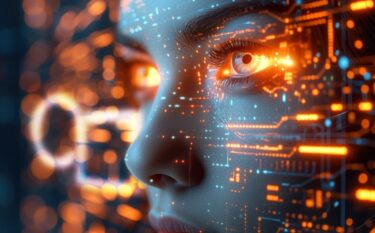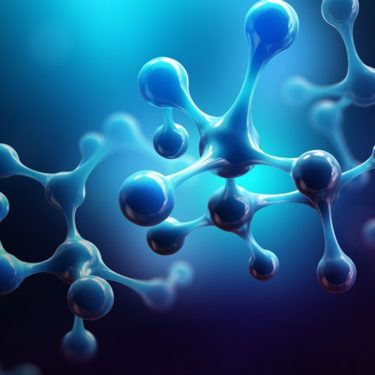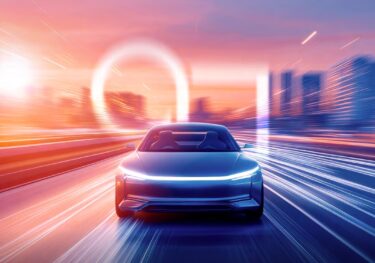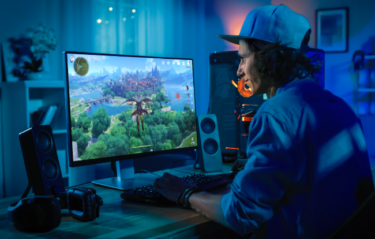Graphics
Processing
PowerVR-based GPUs delivering high performance, low power, and cutting-edge features, from wearables to cloud gaming.


STILL THE ORIGINAL; STILL THE BEST
With over 30 years and 14 generations of PowerVR development, Imagination pioneered parallel GPU architecture for power-constrained devices. Whether industrial UI or cloud gaming, our scalable GPUs set the standard.
Discover our GPU IP
OUR LATEST GRAPHICS INNOVATIONS
WHY CHOOSE IMAGINATION GPU?

FLEXIBLE GRAPHICS & COMPUTE FOR MODERN WORKLOADS
This flexibility supports a wide range of use cases, from automotive UI/UX and smart displays to cloud gaming and XR applications, all while maximising silicon efficiency.

BEST-IN-CLASS POWER EFFICIENCY
This makes them ideal for edge AI, wearables, consumer electronics, and power-sensitive mobile applications.

GRAPHICS IP FOR GAMING – FROM MOBILE TO CLOUD
Whether you’re designing for AAA cloud gaming, mid-range smartphones, or portable consoles, we offer scalable cores to suit your performance targets.

TRUSTED IP WITH AUTOMOTIVE-GRADE SAFETY
With over two decades of deployment in automotive environments, we continue to lead in GPU IP for safety-critical and in-vehicle applications.
RISC-V READY
We provide comprehensive tools, documentation, and support to help RISC-V developers bring graphics and compute functionality to embedded and edge platforms.
MEET THE IMAGINATION GPU FAMILY

Imagination’s E-Series GPU IP overcomes the performance, memory, and power limits of edge AI. Designed for next-gen applications across mobile, automotive, desktop, and consumer markets, E-Series combines high performance with the flexibility and programmability of GPU acceleration—enabling more adaptable and future-proof edge system designs.

Imagination’s D-Series takes GPU density, efficiency and performance to a new level and adds innovative extras that help our partners succeed in competitive markets – whether that’s enabling automotive chip designers to achieve ASIL-B functional safety without overhead, or halving the area penalty of mobile ray tracing.

Imagination’s efficient GPUs improve user experiences across a wide range of consumer devices. IMG CXM is Imagination’s latest, highly efficient GPU, available in a variety of configurations to ensure the best fit for your project.

B-Series covers all of Imagination’s markets, scaling from low-area configurations for set-top boxes right the way through to high-performance solutions for desktop. B-Series introduces Imagination’s innovative multi-core technology for boosting performance or adding extra multitasking flexibility to the GPU.

IMG A-Series contains Imagination’s smallest GPU IP and is perfect for industrial settings, consumer devices and entry-level mobile. Optimised for power efficiency, A-Series delivers consistent, sustainable frame rates without clock throttling.
ROBUST DEVELOPER SOFTWARE & COMMUNITY SUPPORT
PowerVR SDK
PowerVR TOOLS
OPEN SOURCE DRIVERS
READY TO POWER YOUR NEXT PRODUCT WITH AN INDUSTRY-LEADING GPU?
Let’s talk about how Imagination can help you deliver scalable graphics, AI, and compute acceleration, optimised for your market.
Talk to our Sales TeamFREQUENTLY ASKED QUESTIONS
A GPU (Graphics Processing Unit) is a specialised processor designed to handle complex, repetitive tasks like rendering graphics and accelerating AI workloads. Unlike a CPU, which handles tasks in sequence, a GPU works in parallel, processing thousands of operations at once.
In graphics processing, a GPU calculates positions, lighting, shadows, and reflections to create smooth, realistic visuals. Imagination’s GPU IP is optimised not just for high-performance 3D graphics but also for AI tasks such as image upscaling and denoising, making it ideal for everything from mobile devices to data centres.
By connecting to the CPU and memory, the GPU handles heavy visual or compute tasks while freeing up the CPU for other system processes. This division of labour ensures faster, more efficient performance across a wide range of applications.
Both GPUs (Graphics Processing Units) and CPUs (Central Processing Units) are essential for modern computing, but they’re optimised for different tasks.
A CPU is a general-purpose processor that handles everyday computing tasks like running software, managing operating systems, and performing logic and arithmetic operations. CPUs typically have a smaller number of powerful cores designed for sequential processing, ideal for tasks where each step depends on the last.
A GPU, on the other hand, is designed for parallel processing, handling thousands of smaller tasks at once. This makes GPUs much better suited to workloads like rendering 3D graphics, powering user interfaces, video processing, and accelerating artificial intelligence (AI) tasks such as machine learning and computer vision.
Our GPU IP is specifically optimised to deliver high-performance graphics and AI acceleration while maintaining industry-leading power efficiency, making it ideal for everything from mobile devices to data centres and automotive systems.
GPUs are found in a wide range of everyday products, powering graphics, visual experiences, and AI workloads. Common examples include:
-
Smartphones and Tablets: Most mobile devices feature GPUs to deliver smooth graphics, video playback, mobile gaming, and AI-enhanced camera features.
-
Game Consoles: Consoles like PlayStation and Xbox rely on high-performance GPUs for realistic 3D graphics and immersive gaming experiences.
-
Desktop Computers and Laptops: GPUs handle everything from gaming and creative workloads to video conferencing and web browsing on personal computers.
-
Automotive Systems: Modern vehicles use GPUs for infotainment displays, digital dashboards, advanced driver assistance systems (ADAS), and in some cases, autonomous driving functions.
-
Smart TVs and Set-Top Boxes: GPUs render user interfaces, stream video content, and enable next-generation home entertainment experiences.
Our GPU IP powers many of these products, offering scalable, power-efficient graphics and compute performance tailored for consumer electronics, automotive, and data centre markets.
GPU IP refers to licensed graphics processing technology that chip manufacturers integrate into their own silicon designs. Imagination’s GPU IP enables SoC developers to incorporate advanced graphics features like ray tracing, AI acceleration, and GPU virtualisation, delivering high-performance visuals while maintaining strict power and thermal limits.
Imagination’s unique HyperLane virtualisation technology allows multiple users or applications to securely share the same GPU hardware. This is especially useful in cloud gaming, data centres, and automotive systems where multiple workloads must run simultaneously without interference, ensuring efficient resource utilisation and lower operational costs.
RISC-V is an open-standard processor architecture growing in popularity across industries. Imagination’s RISC-V-compatible GPU IP provides cutting-edge graphics and AI capabilities optimised for RISC-V CPUs, making it ideal for designers seeking flexibility, reduced licensing costs, and future-ready SoC solutions.




